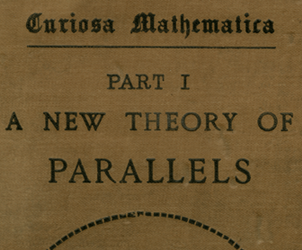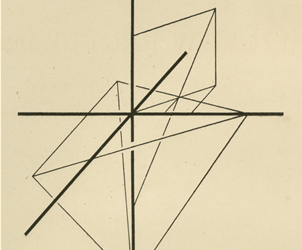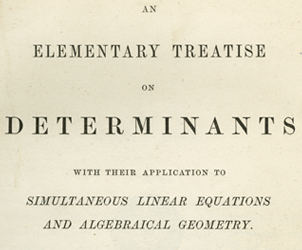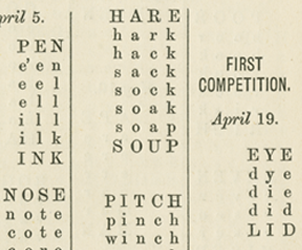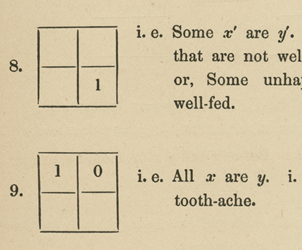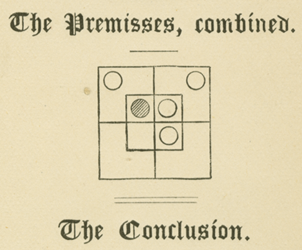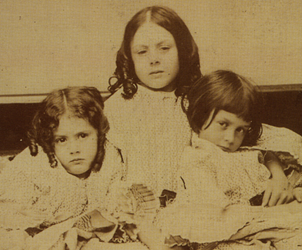Math and Photography
“Come, we shall have some fun now!” thought Alice. “I'm glad they've begun asking riddles.”
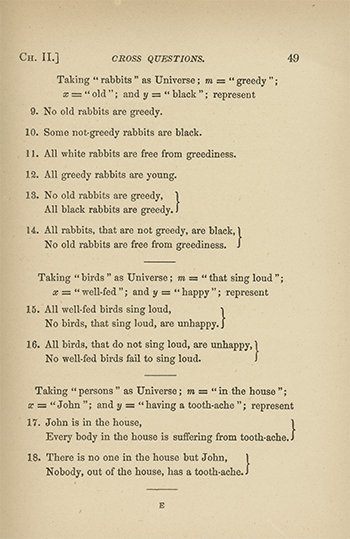
Game of Logic, 1886.
Math, Photography, and Lewis Carroll
Lewis Carroll’s accomplishments extended far beyond his talents as a writer. Before he gained fame as the author of the Alice books, Carroll was a respected mathematician, logician, and avid photographer.
Mathematics was not only Carroll’s means of making a living as a lecturer at Christ Church, but a lifelong passion. He is said to have begged his father at a very young age to explain logarithms to him. Carroll wrote numerous texts on algebra, geometry, trigonometry, and higher mathematics, and made important contributions to subjects such as voting systems and tennis tournament scoring.
Carroll greatly enjoyed recreational mathematics and invented scores of imaginative puzzles, games, ciphers, and mnemonics. In the field of logic, he developed an ingenious way of drawing inferences using diagrams. However, his work in logic was not always taken seriously because he devised humorous examples. A typical Carroll syllogism, or logical argument, reads:
All babies are illogical.
Nobody is despised who can manage a crocodile.
Illogical persons are despised.
Solution: Babies cannot manage crocodiles.
Similar playful logic can be found in Alice’s Adventures in Wonderland and Through the Looking-Glass.
Carroll took up photography in 1856, while the art form was still in its infancy. The wet collodion process that was used at the time was a demanding method of processing photographs, which suited Carroll’s patient and meticulous nature.
Carroll’s photographs often depicted children, as well as friends, family, and colleagues. Among his more famous subjects were the Poet Laureate of Great Britain Alfred, Lord Tennyson and Pre-Raphaelite artists Dante Gabriel Rossetti, John Everett Millais, and William Holman Hunt.
In 1880, Carroll gave up photography as the wet collodion process was replaced by a dry process. This new simplified process was dismissed by Carroll, who felt the artistry was lost now that anyone could be a photographer. He nevertheless remains one of Britain’s leading photographers of the 19th century.
Select a title below to explore mathematical works by Lewis Carroll.

